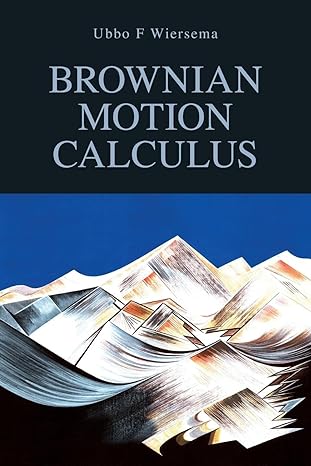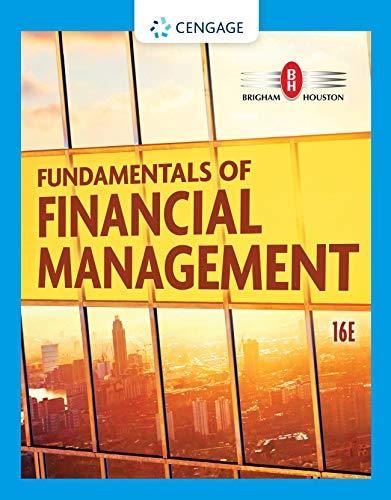Go back


Brownian Motion Calculus(1st Edition)
Authors:
Ubbo F. Wiersema

Cover Type:Hardcover
Condition:Used
In Stock
Include with your book
Free shipping: April 04, 2024Popular items with books
Access to 3 Million+ solutions
Free ✝
Ask 10 Questions from expert
200,000+ Expert answers
✝ 7 days-trial
Total Price:
$0
List Price: $31.99
Savings: $31.99(100%)
Book details
ISBN: 0470021705, 978-0470021705
Book publisher: Wiley
Get your hands on the best-selling book Brownian Motion Calculus 1st Edition for free. Feed your curiosity and let your imagination soar with the best stories coming out to you without hefty price tags. Browse SolutionInn to discover a treasure trove of fiction and non-fiction books where every page leads the reader to an undiscovered world. Start your literary adventure right away and also enjoy free shipping of these complimentary books to your door.
Brownian Motion Calculus 1st Edition Summary: BROWNIAN MOTION CALCULUSBrownian Motion Calculus presents the basics of Stochastic Calculus with a focus on the valuation of financial derivatives. It is intended as an accessible introduction to the technical literature. The sequence of chapters starts with a description of Brownian motion, the random process which serves as the basic driver of the irregular behaviour of financial quantities. That exposition is based on the easily understood discrete random walk. Thereafter the gains from trading in a random environment are formulated in a discrete-time setting. The continuous-time equivalent requires a new concept, the It? stochastic integral. Its construction is explained step by step, using the so-called norm of a random process (its magnitude), of which a motivated exposition is given in an Annex. The next topic is It?’s formula for evaluating stochastic integrals; it is the random process counter part of the well known Taylor formula for functions in ordinary calculus. Many examples are given. These ingredients are then used to formulate some well established models for the evolution of stock prices and interest rates, so-called stochastic differential equations, together with their solution methods. Once all that is in place, two methodologies for option valuation are presented. One uses the concept of a change of probability and the Girsanov transformation, which is at the core of financial mathematics. As this technique is often perceived as a magic trick, particular care has been taken to make the explanation elementary and to show numerous applications. The final chapter discusses how computations can be made more convenient by a suitable choice of the so-called numeraire. A clear distinction has been made between the mathematics that is convenient for a first introduction, and the more rigorous underpinnings which are best studied from the selected technical references. The inclusion of fully worked out exercises makes the book attractive for self study. Standard probability theory and ordinary calculus are the prerequisites. Summary slides for revision and teaching can be found on the book website www.wiley.com/go/brownianmotioncalculus.
Customers also bought these books
Frequently Bought Together
Top Reviews for Books
Ronald D Johnson Jr
( 4 )
"Delivery was considerably fast, and the book I received was in a good condition."










